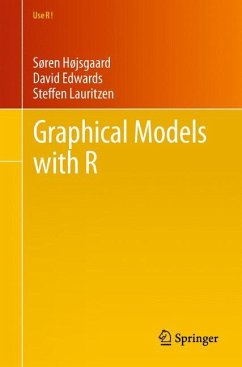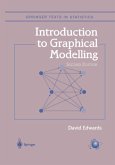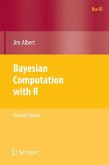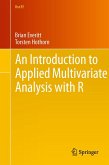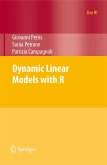Graphical models in their modern form have been around since the late 1970s and appear today in many areas of the sciences. Along with the ongoing developments of graphical models, a number of different graphical modeling software programs have been written over the years. In recent years many of these software developments have taken place within the R community, either in the form of new packages or by providing an R interface to existing software. This book attempts to give the reader a gentle introduction to graphical modeling using R and the main features of some of these packages. In addition, the book provides examples of how more advanced aspects of graphical modeling can be represented and handled within R. Topics covered in the seven chapters include graphical models for contingency tables, Gaussian and mixed graphical models, Bayesian networks and modeling high dimensional data.
"This book is useful for readers who want to analyze graphical models with R and who are searching for an initial aid in programming and a guide through the jungle of different R packages for graphical models. ... I recommend the book to readers whose aim is primarily to apply graphical models in R and who are therefore looking for a good introductory book." (Ronja Foraita, Biometrical Journal, Vol. 56 (2), 2014)
The book, written by some of the people who laid the foundations of work in this area, would be ideal for researchers who had read up on the theory of graphical models and who wanted to apply them in practice. It would also make excellent supplementary material to accompany a course text on graphical modelling. I shall certainly be recommending it for use in that role...the book is neither a text on graphical models nor a manual for the various packages, but rather has the more modest aims of introducing the ideas of graphical modelling and the capabilities ofsome of the most important packages. It succeeds admirably in these aims. The simplicity of the commands of the packages it uses to illustrate is apparent, as is the power of the tools available.
International Statistical Review, Volume 31, Issue 2 review by David J. Hand
The book, written by some of the people who laid the foundations of work in this area, would be ideal for researchers who had read up on the theory of graphical models and who wanted to apply them in practice. It would also make excellent supplementary material to accompany a course text on graphical modelling. I shall certainly be recommending it for use in that role...the book is neither a text on graphical models nor a manual for the various packages, but rather has the more modest aims of introducing the ideas of graphical modelling and the capabilities ofsome of the most important packages. It succeeds admirably in these aims. The simplicity of the commands of the packages it uses to illustrate is apparent, as is the power of the tools available.
International Statistical Review, Volume 31, Issue 2 review by David J. Hand

